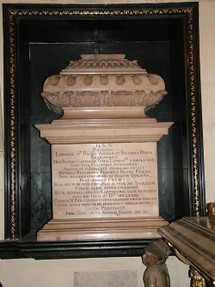 When James Tyrrell was tortured into confessing to the murder of the Princes in the Tower, he seemed to have trouble locating where precisely they were living at the time.
When James Tyrrell was tortured into confessing to the murder of the Princes in the Tower, he seemed to have trouble locating where precisely they were living at the time.
We know that they were in the north-eastern (round) turret of the White Tower. He claimed that he buried their bodies under the stairwell of the Bloody Tower.
This left a bit of a plot hole in the story, which generations of historians have scurried to fill. Alison Weir, for example, has the princes willingly walking over to the Bloody Tower from the White Tower, on a promise of meeting up with their mother, if they're good and quiet.
Tyrrell's tale nevertheless received a great boost in 1674. As part of a huge renovation project on behalf of the Stuarts, workman set about 'pullinge down the Tower against the White Tower'. This was almost certainly the twelfth century fore-building, which had been allowed to be constructed against the south wall. Most agreed that it was not only ugly, but hindered the defense of the White Tower.
As the 17th century demolition crew moved in, they made a grisly discovery. Under the flagstones of the corridor leading into the chapel were the skeletal remains of two children.
Charles II promptly declared them the Princes in the Tower and had an ornate urn sculpted to receive their bones. It still sits in Westminster Abbey, labelled Edward V and Richard, Duke of York.
Scientists got to have a peep at the skeletons in 1933. They determined that some of the bones actually belonged to chickens and the like, but there were definitely two children of roughly the right ages in there. The gender could not be discerned.
(It could now, but Queen Elizabeth II refuses permission for modern forensic experts to open the urn.)
All cut and dry, Princes found and all that. Except for two small details. Why aren't they where James Tyrrell said that he left them? (The semi official explanation is that they were moved from the Bloody Tower to the White Tower after Tyrrell left.) And, if they are the Princes, then who is buried in the crypt in Windsor with their parents?


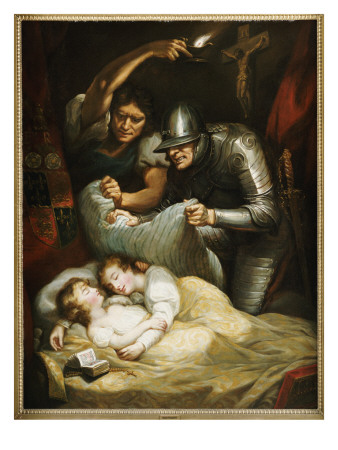
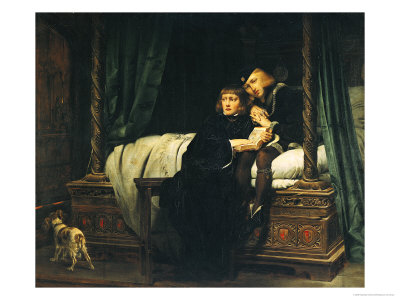













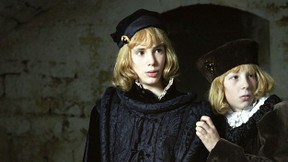 Everyone kind of assumes that Edward V and Richard, Duke of York, were murdered. Not least because that's what the Tudors told us happened.
Everyone kind of assumes that Edward V and Richard, Duke of York, were murdered. Not least because that's what the Tudors told us happened.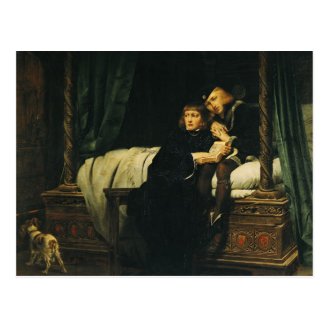
 When James Tyrrell was tortured into confessing to the murder of the Princes in the Tower, he seemed to have trouble locating where precisely they were living at the time.
When James Tyrrell was tortured into confessing to the murder of the Princes in the Tower, he seemed to have trouble locating where precisely they were living at the time.


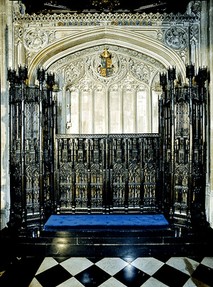 In 1789, workmen were investigating the fact that the floor appeared to be sinking in one area of St George's Chapel, in Windsor.
In 1789, workmen were investigating the fact that the floor appeared to be sinking in one area of St George's Chapel, in Windsor.







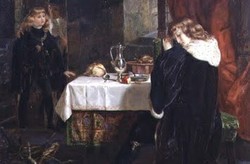

 St Tydecho's Churches in West Waleson 09/03/2014
St Tydecho's Churches in West Waleson 09/03/2014
 Goodies for an Outlander Premiere Partyon 03/06/2015
Goodies for an Outlander Premiere Partyon 03/06/2015
 Holocaust Memorial Day Interview with Rainer Höss, Grandson of Rudolf Architect of Auschwitzon 01/24/2015
Holocaust Memorial Day Interview with Rainer Höss, Grandson of Rudolf Architect of Auschwitzon 01/24/2015
 Romantic Valentine Gifts for an Outlander Fanon 01/16/2015
Romantic Valentine Gifts for an Outlander Fanon 01/16/2015

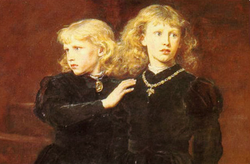
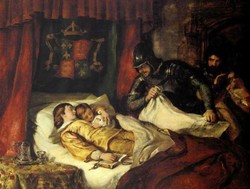
What do YOU think happened to the Princes in the Tower?
You're very welcome! I've also thought of Dr Who, while contemplating the Princes in the Tower. You're right though, it can drive you half mad with wondering what actually happened to the boys.
About the only person I now think was innocent was Richard III. It was totally not in his interests to kill them.
Ologsinquito - Precisely, but I still have my suspect.
Aingham69 - Oh! You mentioned Anne Neville before, and I haven't given her due consideration. She had the access and Richard would definitely have kept quiet for her. She should be on the suspect list.
Great piece. I've never viewed Richard III as a monster; just a product of his time. If he did do it, I think I could understand his motives at the time. That said, I don't think it was him. While you raise a good point about Margaret Beaufort, my suspicions still like with Anne Neville for some reason. She was the Kingmaker's Daughter and she definitely wasn't as weak minded as so many seem to make her out in books.
Unfortunately, it's something that we'll never find out but history will always paint Richard III in a bad light all thanks to the Tudor propaganda. It's only been since finding his body that people have realised Henry VII and his side lied/exaggerated about a few things.
There are many suspects. They also could have died of natural causes. Who knows?
Currently, I least suspect Richard III. I am in the minority here.
No, I've lived long enough to realize that anything is possible. Sometimes the person you'd least suspect is the guilty one.
Glad you liked it. So you're not going to hazard even a gut feeling?
Hi Jo,
It's anyone's guess. Another interesting installment in this series.